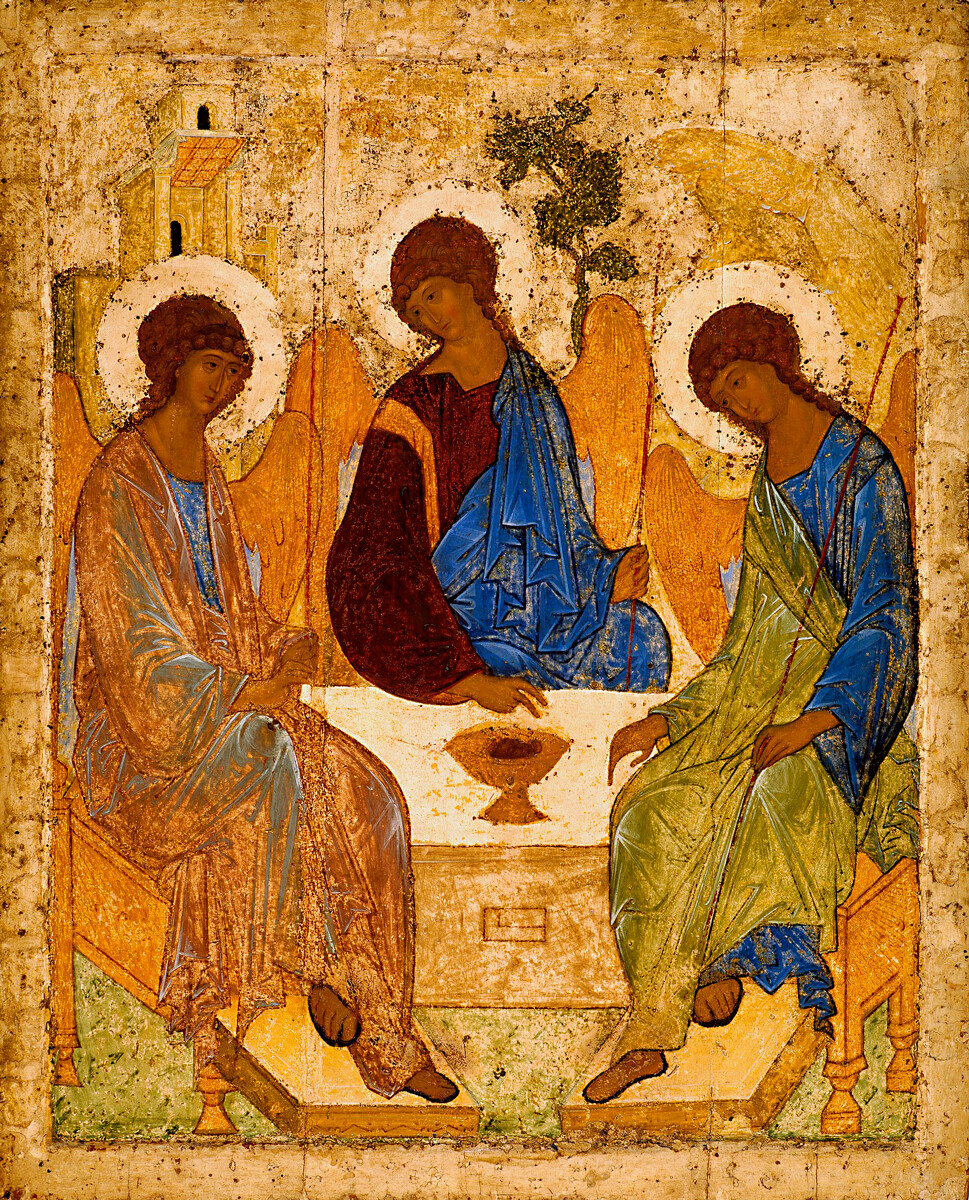
Andrei Rublev. The Trinity, 1420s
Public domainThis is Russia’s most famous icon painter, who lived at the turn of the 14th and 15th centuries. Not many of his works – icons and church paintings – have survived to our day. Rublev’s most famous icon, The Trinity, was created in the 1420s for the Trinity Lavra of St. Sergius. With this masterpiece, for the first time the great icon painter was able to visually formulate one of Christianity’s core doctrines – the Divine Trinity. (Read more about it here). Recently, the government decided to return The Trinity to the Lavra of St Sergius. For decades, since Soviet times, the precious icon had been kept at the State Tretyakov Gallery in Moscow.
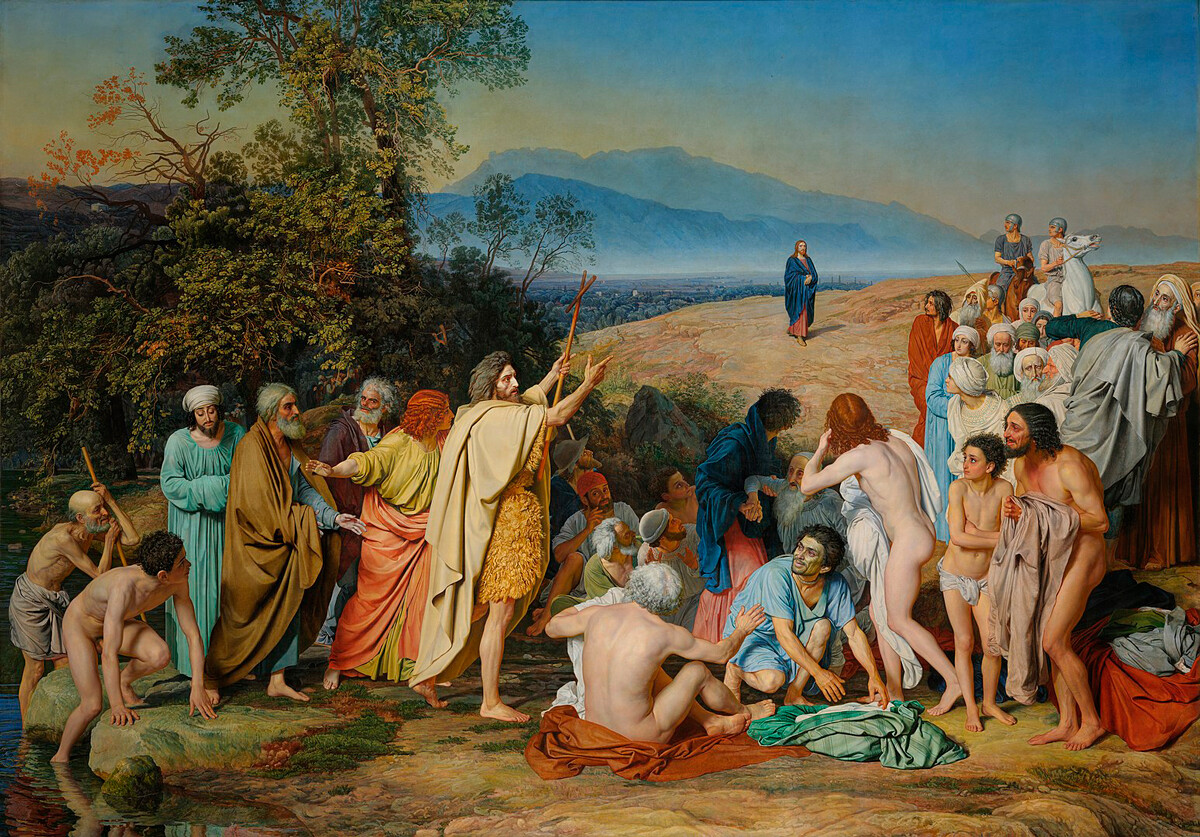
Alexander Ivanov. The Appearance of Christ Before the People, 1837-1857
Tretyakov GalleryReligious paintings occupy a large segment of Russian art right until the end of the 19th century. One of the genre’s most famous representatives is Alexander Ivanov. For nearly 20 years he worked on his most well-known masterpiece, The Appearance of Christ Before the People; its completion was a significant event in Russian high society. The painting was purchased by Emperor Alexander II, who then gifted it to Moscow’s Rumyantsev Museum, where a special hall was built specifically for the masterpiece.
This work, which astounded contemporaries, remains to this day one of the most prominent art works in the collection of the State Tretyakov Gallery and continues to influence artists; for example, Russian contemporary art giant Erik Bulatov was inspired by Ivanov’s masterpiece and he paid homage to it with his The Painting and the Audience (2011-2012).
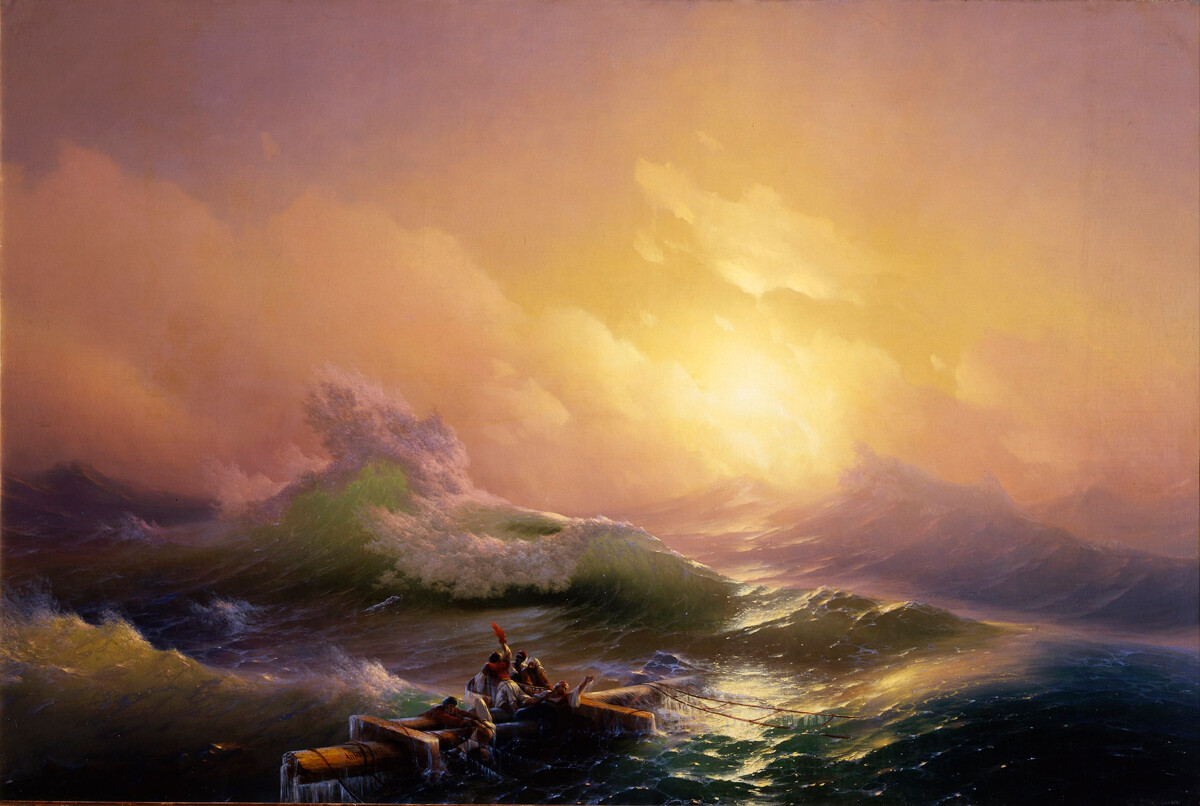
Ivan Aivazovsky. The Ninth Wave, 1850
The Russian MuseumThe leading Russian seascape painter was born on the shores of the Black Sea in Crimea, and spent the majority of his young life there, watching and admiring the seascapes and depicting them on canvas. Aivazovsky was also an imperial naval officer, serving as the official artist of the Russian Navy. He traveled a lot across Europe and also visited the United States; everywhere he traveled he always painted the sea. The Ninth Wave is considered his most famous and expressive painting, which depicts the sea after a storm. The survivors after a shipwreck are trying to save themselves, clinging to what remains of a ship mast, full of fear and worry as a giant wave is about to crash down on them.
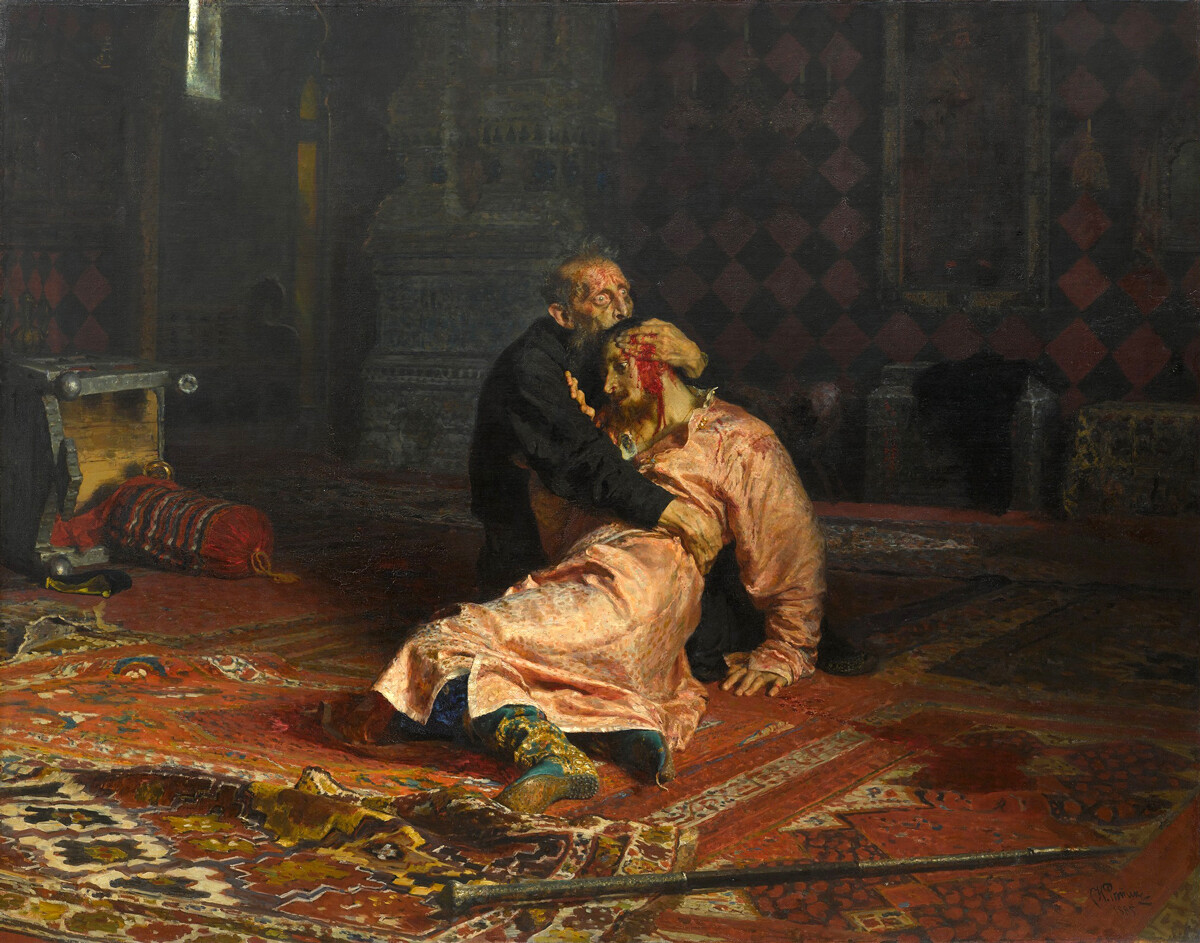
Ilya Repin. Ivan the Terrible and His Son Ivan on 16 November 1581, 1883-1885
Tretyakov GalleryOne of Russia’s leading realist painters gained fame in his lifetime working in a wide variety of artistic genres. His portraits are distinguished for their incredible realism and vivacity (in particular, he produced about a dozen Leo Tolstoy portraits).
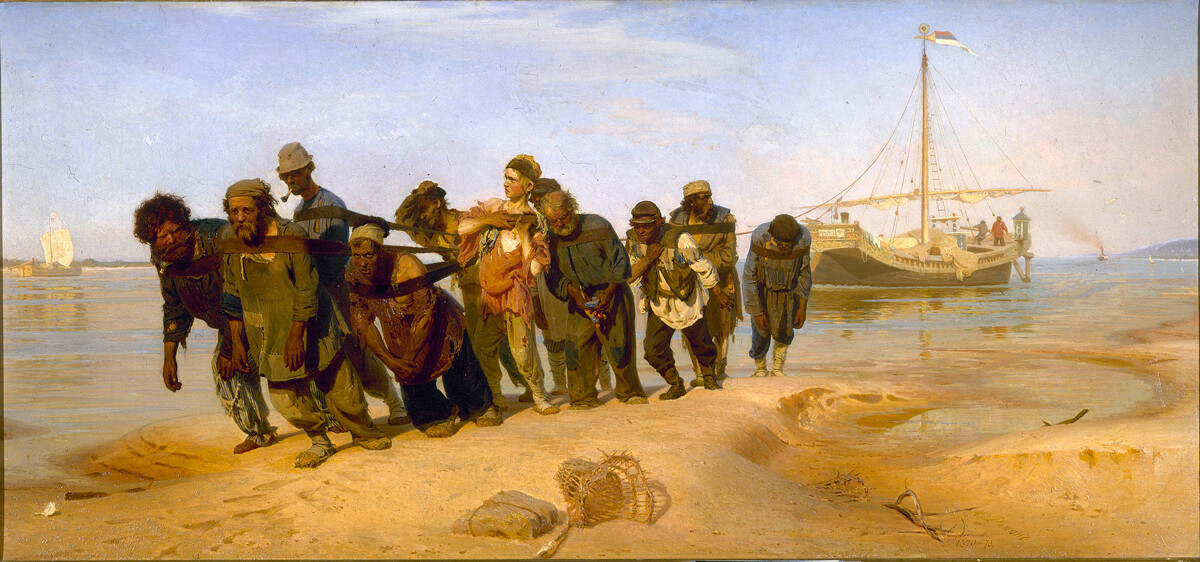
Ilya Repin. Barge Haulers on the Volga, 1870-1873
The Russian MuseumHe also produced epic historical paintings such as Ivan the Terrible and His Son Ivan on 16 November 1581; as well as his monumental Ceremonial Sitting of the State Council on 7 May 1901, which contains more than 60 portraits of imperial government officials. One of his most famous paintings - Barge Haulers on the Volga – belongs to the social commentary genre that was popular in the late 19th century.
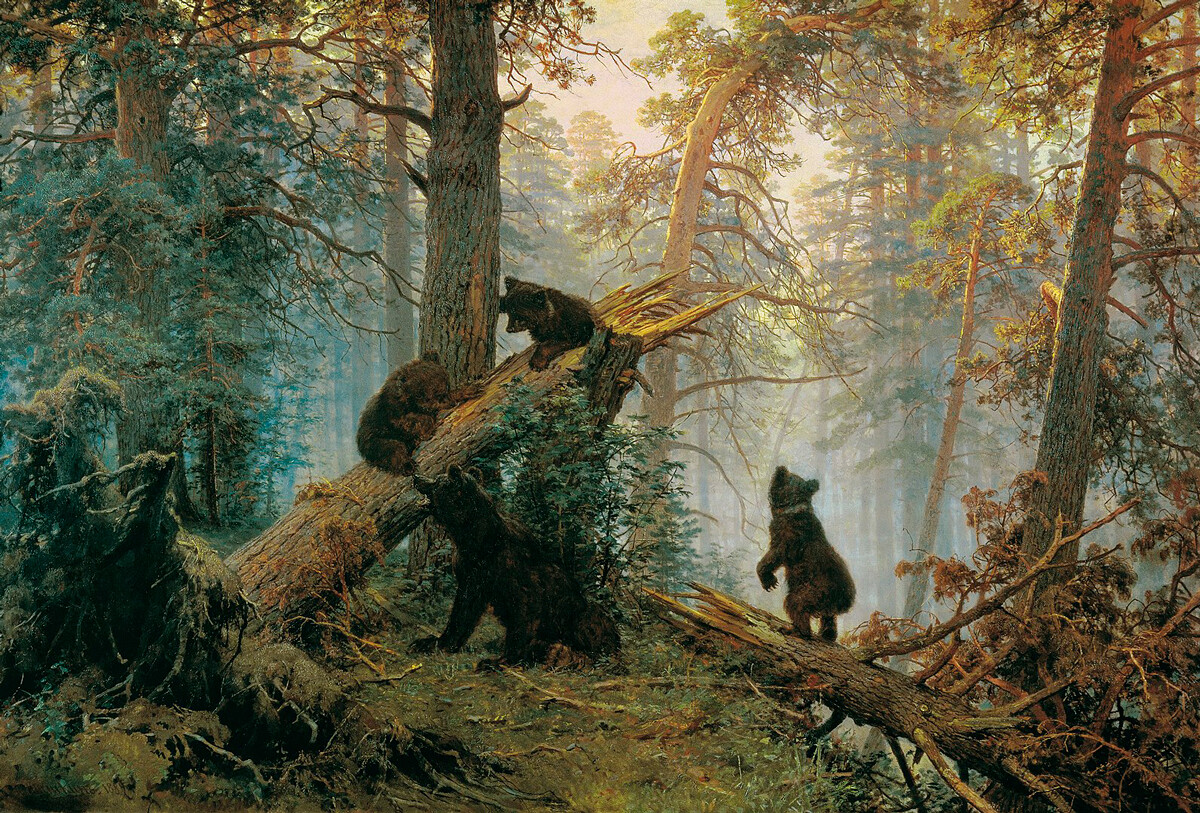
Ivan Shishkin. Morning in a Pine Forest, 1889
Tretyakov GalleryThis genius of realistic landscape painting was a huge proponent of the Russian forest as an artistic concept, and he created dozens of paintings. The main characters in his artworks are pine forests, groves, and oak forests. Naturally, his most famous painting is Morning in a Pine Forest (the bears in it were painted by Konstantin Savitsky).
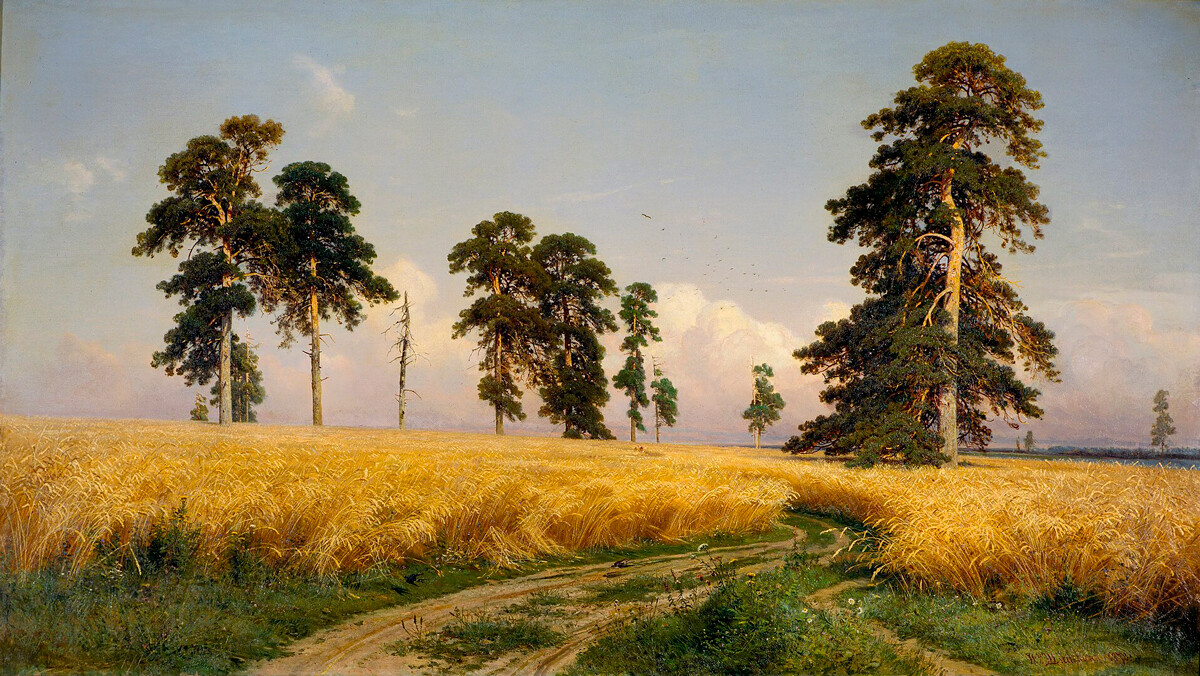
Ivan Shishkin. Rye, 1878
Tretyakov GalleryShishkin had an amazing ability to play with light and shadow. His forests can be foggy or snowy, or sunlight pokes through the crowns of the trees. Another one of his famous paintings is Rye, which shows a country road that goes through a golden rye field, as well as the painter’s favorite pines. Shishkin was relentlessly copied by other artists during Soviet times; and his works were often printed on postage stamps, posters, and even candy wrappers.

Valentin Serov. Girl with Peaches, 1887
Tretyakov GalleryA realist and modernist, Serov was a student of Repin. He was, first and foremost, famous as a portraitist and was commissioned to paint portraits of the members of the imperial family, especially the emperors, as well as famous people like Princess Yusupova, the composer Rimsky-Korsakov, or his colleague painters. One of his most renowned works today – Girl with Peaches – is a portrait of the daughter of the art patron Savva Mamontov.
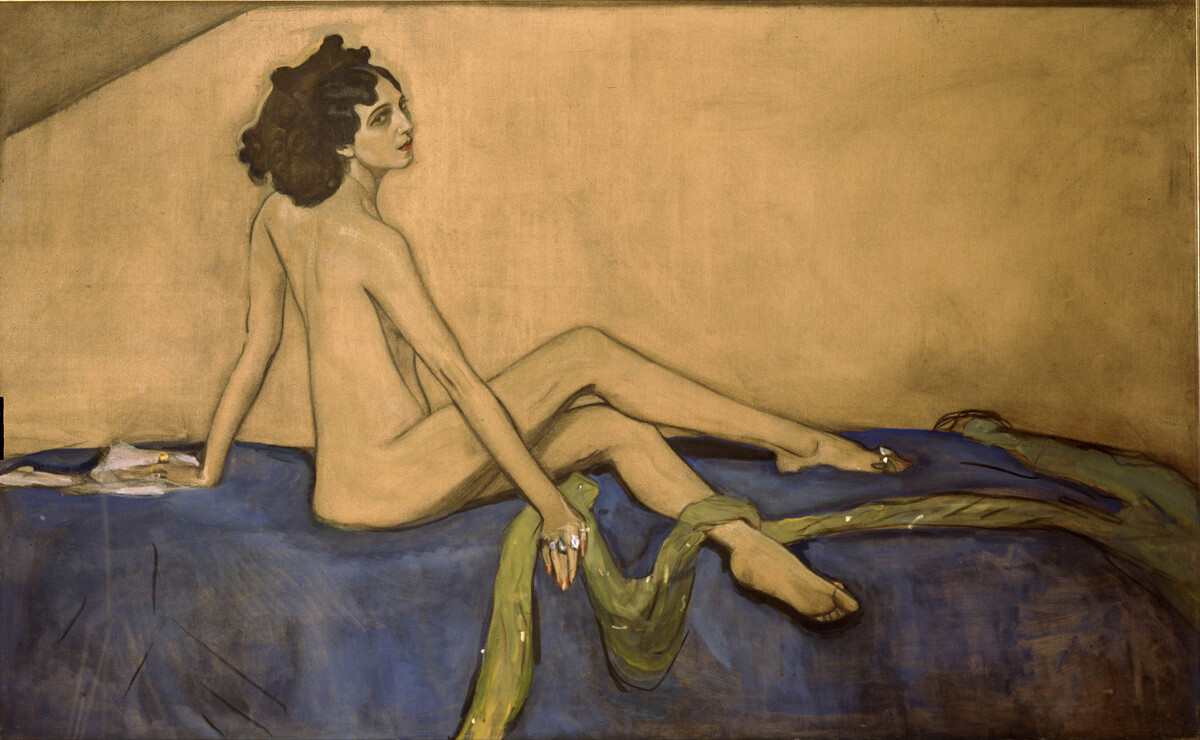
Valentin Serov. Portrait of Ida Rubinstein, 1910
The Russian MuseumIn his later paintings, Serov distanced himself from realism and fell under the influence of modernism. His famous paintings of that era are the nude portrait of the dancer Ida Rubinstein and The Rape of Europa.
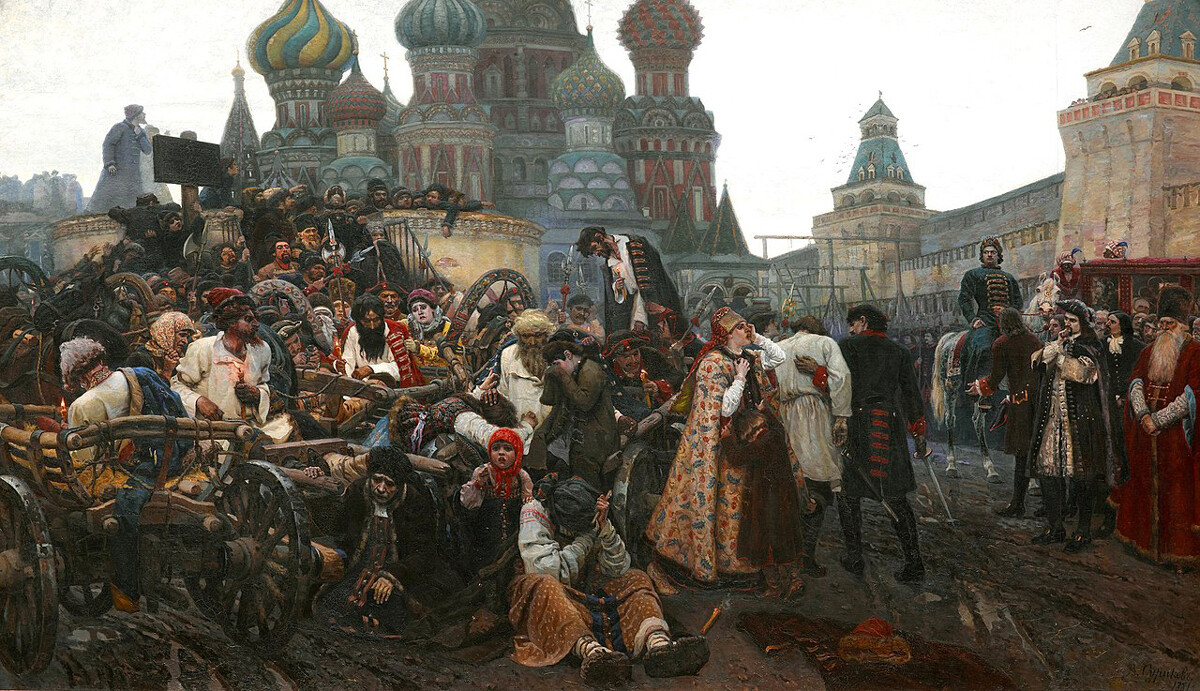
Vasily Surikov. The Morning of the Streltsy Execution, 1881
Tretyakov GallerySurikov is the leading master of historical painting in Russian art. He brought to life a whole range of forgotten narratives. One of his first and most famous historical paintings is The Morning of the Streltsy Execution, which shows Red Square and St. Basil’s Cathedral at the moment just when the mutinous streltsy are about to be executed in 1698 on the order of Peter the Great.
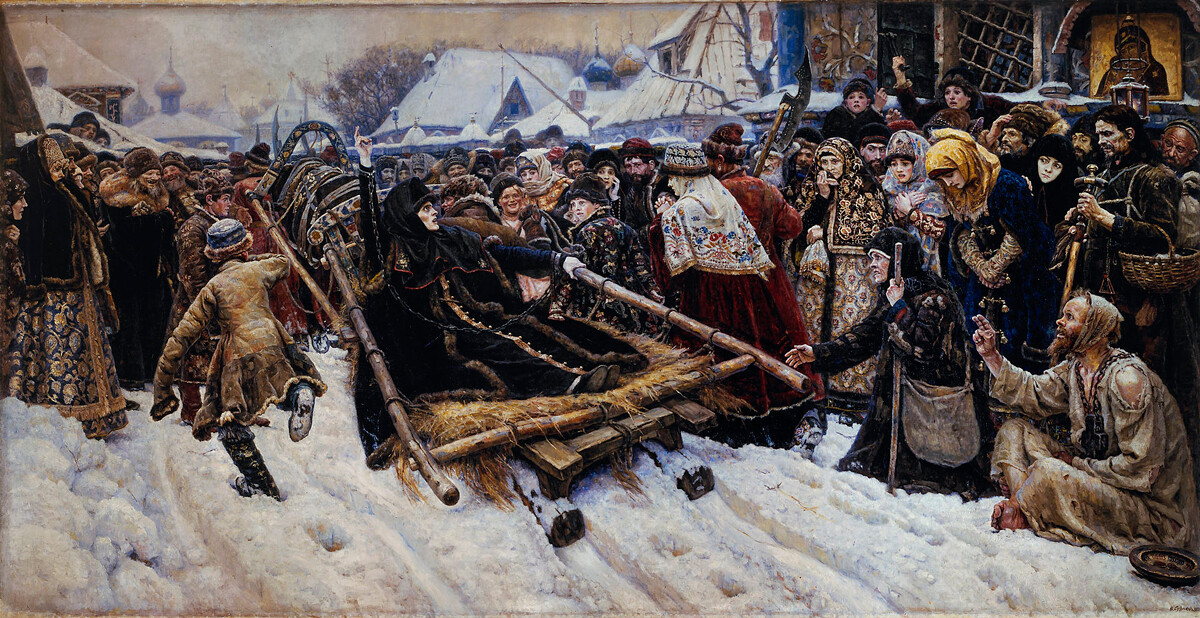
Vasily Surikov. Boyarina Morozova, 1884-1887
Tretyakov GalleryMany of his paintings, in one way or another, were related to Siberia, because the painter himself came from Krasnoyarsk and watched the community of Old Believers, which resulted in his painting Boyarina Morozova, as well as the lives of political exiles and settlers. His painting, Menshikov in Beryozovo, depicts how a once powerful government official and Peter the Great’s confidant ended his life in exile in Siberia living in a small dilapidated hut.

Wassily Kandinsky. Composition VII, 1913
Tretyakov GalleryKandinsky is considered to be one of the fathers of abstraction. In the 1910s, after lengthy experiments, he pioneered the first non-objective paintings and compositions, which later became his distinct visual language. He endlessly played with forms, geometry, and color. Rejecting the incursion of ideology into Soviet art, Kandinsky emigrated to Germany, and then to France, from where his paintings were acquired by museums all around the world. In 2017, his canvas, Painting with White Lines, (1913), became one of the most expensive paintings ever sold at auction, going under the hammer for 33 million pounds sterling.
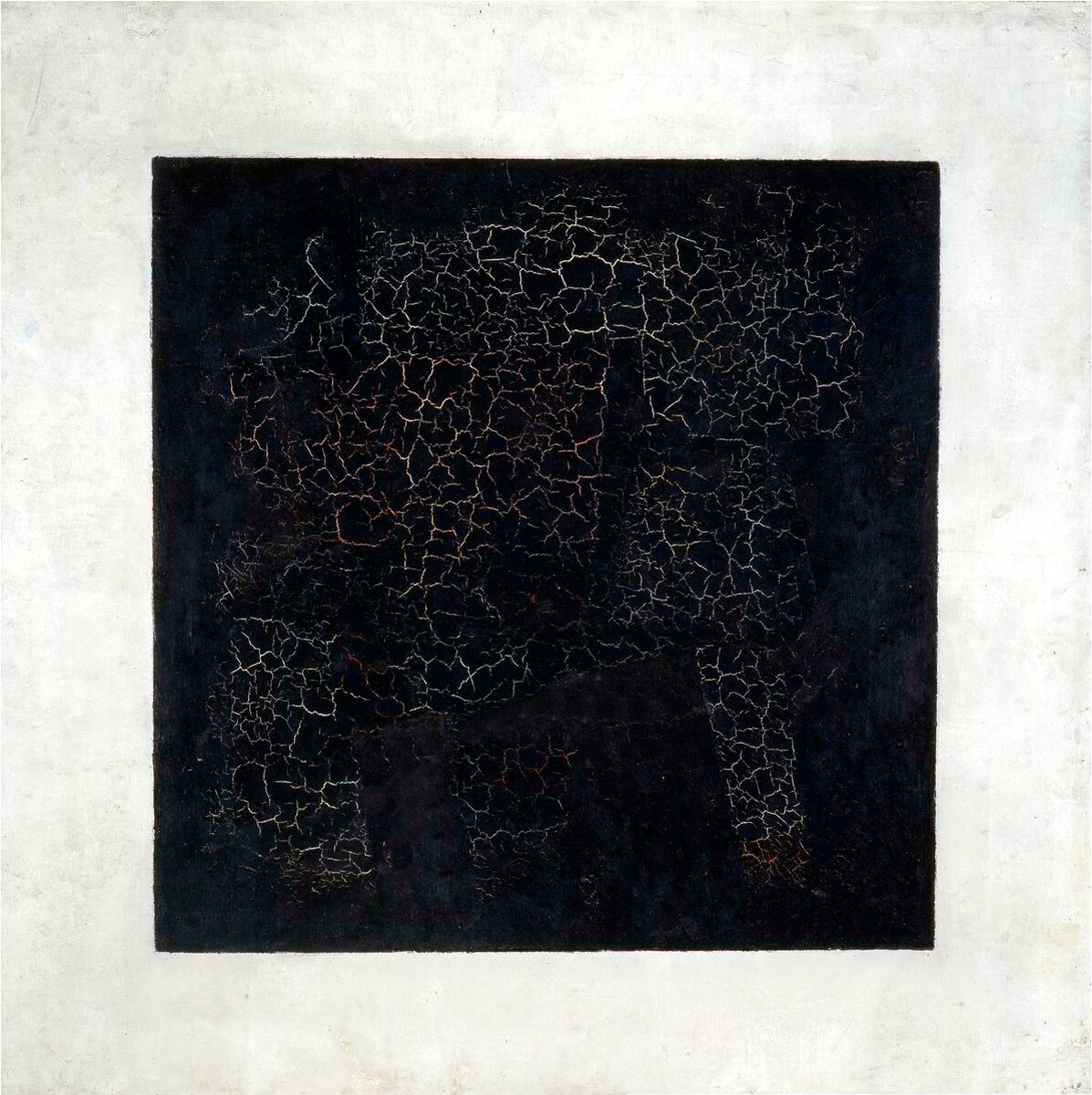
Kazimir Malevich. The Black Square, 1915
Tretyakov GalleryMalevich is one of the most prominent artists of the Russian Avant-garde. His early paintings, however, were quite figurative, and in them one can see the influence of Impressionism (Spring. Garden in Blossom, 1914) and Fauvism (Self-portrait, 1908). Gradually, he moved to his own discoveries in art and towards the invention of Suprematism. In fact, his painting Black Square (1915) became the movement’s quintessence and unofficial symbol. Its first public viewing was at a Futurist exhibition, where quite scandalously it was placed in the ‘sacred corner’, just like a religious icon. Today, Malevich’s paintings are some of the world’s most expensive at auction. In 2018, his Suprematist Composition was sold at Christie’s for $85.8 million.
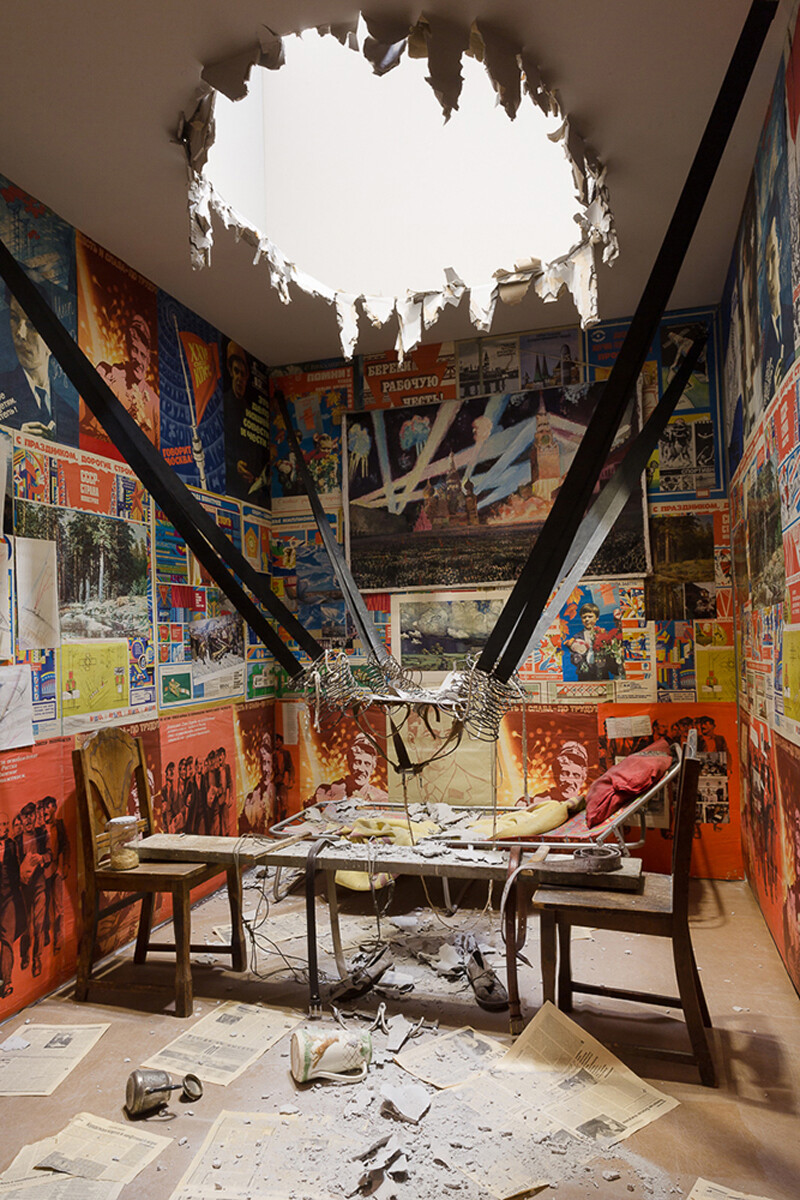
Ilya Kabakov. The Man Who Flew Into Space From His Apartment. Installation in the Centre Pompidou (Paris)
E. Alexeev/Tretyakov GalleryThis Soviet artist and illustrator became the leading Russian conceptualist and is today famous worldwide. His first works were executed in the classic manner under the influence of his teacher, Robert Falk. Then, working officially as a graphic designer, he simultaneously began searching for his own language of creative expression. In the end, he created an entire movement that was later called Moscow Conceptualism, and he assembled a crowd of like-minded people around himself. In the 1980s, Kabakov was one of the first artists in the world to begin creating total installations. The most famous are The Man Who Flew Into Space From His Apartment, The Toilet, Not Everyone Will Be Taken Into the Future. Today, his installations are exhibited in the leading museums of the world. In his artworks, he uses objects and events from everyday Soviet life, and contemplates the past, the present, and the future.
Dear readers,
Our website and social media accounts are under threat of being restricted or banned, due to the current circumstances. So, to keep up with our latest content, simply do the following:
If using any of Russia Beyond's content, partly or in full, always provide an active hyperlink to the original material.
Subscribe
to our newsletter!
Get the week's best stories straight to your inbox